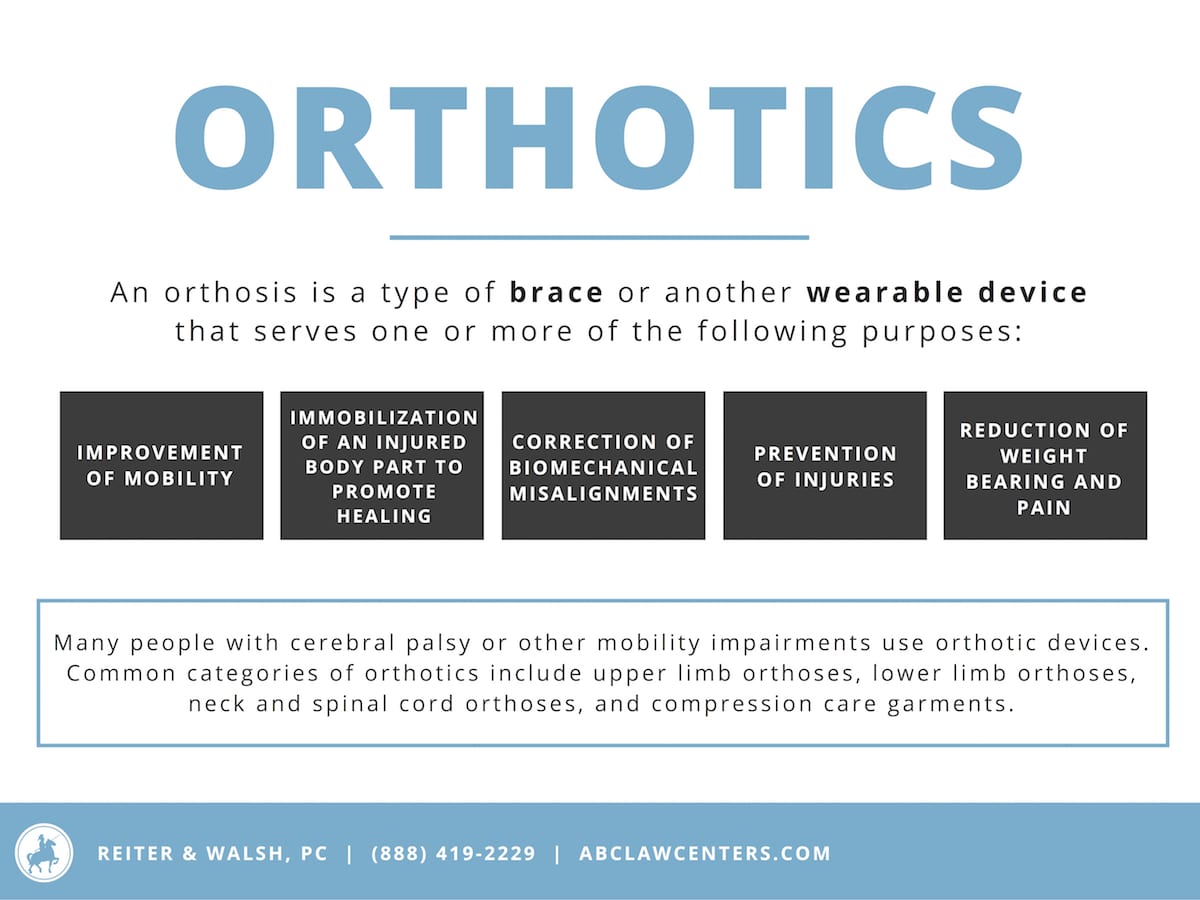Orthotic devices (technically referred to as orthosis) are a type of brace or other wearable that serves one or more of the following purposes:
- Improvement of mobility
- Immobilization of an injured body part to promote healing
- Correction of biomechanical misalignments
- Prevention of injuries
- Reduction of weight bearing and pain
Are orthotics expensive? Do they require a prescription?
Some orthotic devices are relatively inexpensive, over-the-counter products: examples include simple forearm braces with velcro straps or orthopedic shoe inserts. Over-the-counter orthotics are often worn by people who are recovering from minor injuries or hoping to alleviate mild discomforts. Other orthoses require prescription from a medical professional such as an orthotist. This may be necessary for people recovering from a more substantial injury, or those with conditions such as cerebral palsy and spina bifida.
Prefabricated vs Custom-Made Orthoses
Many orthotic devices (especially over-the-counter ones) are prefabricated, which means that they are made without a specific client in mind. However, in many cases, prefabricated orthoses can – and should – be modified to suit the individual wearer. Generally, prefabricated orthotic devices are recommended for short-term use and to treat less serious conditions.
Custom-made orthoses are specifically and uniquely designed to meet an individual’s needs. They are made by taking a cast or mold of the body part(s) that require treatment.
Tell us your story.
Dealing with a birth injury diagnosis can be difficult, but our attorneys can help. The ABC Law Centers: Birth Injury Lawyers team focuses exclusively on birth injury and are dedicated to earning justice for families like yours.
Orthotic Braces for Children with Cerebral Palsy
Orthotic devices play a crucial role in assisting children with cerebral palsy (CP) to improve their mobility and overall quality of life. These specialized devices are designed to provide support, stability, and alignment to various parts of the body that are affected by CP. For example, ankle-foot orthoses (AFOs) help children with cerebral palsy maintain proper foot and ankle alignment, improving their balance and walking abilities. Other orthotic devices, such as knee braces and wrist splints, provide support and control to specific joints, allowing for more controlled movements.
These devices should be carefully customized to each child’s unique needs. They can help to reduce muscle stiffness, promote correct alignment, and enhance functional abilities. By providing the necessary support, orthotics contribute significantly to improving the independence, mobility, and overall well-being of children with cerebral palsy.
Types of Orthoses
Orthotic devices are often named after the body part or parts they are designed to fit. For example, the orthosis mentioned above as being worn on an ankle and foot is called an ankle-foot orthotic, (AFO). Likewise, an orthotic that fits over the knee, ankle, and foot is known as a knee-ankle-foot-orthotic (KAFO). Broader categories include:
- Upper limb orthoses
- Lower limb orthoses
- Neck and spinal cord orthoses
- Compression care garments: These are worn by people with poor circulation or who must remain in one position for extended periods of time (for example, standing all day or sitting in a wheelchair all day). Compression wear can be used to treat deep vein thrombosis and to reduce swelling.
Other Treatments & Therapies
An orthosis functions best when used in tandem with other treatments and therapies, especially when trying to improve motor function. For example, a person with cerebral palsy may benefit from muscle relaxants such as baclofen and botox, surgeries such as selective dorsal rhizotomy (SDR), and physical therapy sessions.
